Differences in endoscopic classification of early colorectal carcinoma between China and Japan: a comparative study
- PMID: 12970890
- PMCID: PMC4656658
- DOI: 10.3748/wjg.v9.i9.1985
Differences in endoscopic classification of early colorectal carcinoma between China and Japan: a comparative study
Abstract
Aim: To compare the differences in the endoscopic classification of early colorectal carcinoma (CRC) between Japan and China.
Methods: Ten cases of early CRC were included in the study. After reviewing the color pictures of these cases, 5 Japanese endoscopists and 5 Chinese endoscopists made their classificatory diagnosis individually using the current Japanese classification, and indicated their findings on which the diagnosis was based.
Results: Some lesions diagnosed by the Japanese endoscopists as IIa or IIa plus IIc, were classified as Is or Isp by the Chinese endoscopists. For superficial lesions consisting of elevation plus central depression, IIa plus depression, IIa plus IIc or IIc plus IIa were classified according to the ratio of elevated area/depressed area. However, international as well as interobserver difference still existed in the classification of such lesions. In addition, most Chinese endoscopists overlooked slightly depressed part on the top of a protruded lesion. Laterally spreading tumor, a special type of IIa, was identified as LST by some Japanese endoscopists.
Conclusion: Discrepancies on macroscopic classification for early CRC do exist between Japanese and Chinese endoscopists, which are found not only in terminology but also in recognition of some lesions. In order to develop a universal classification, it needs for international communication and cooperation.
Figures
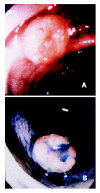
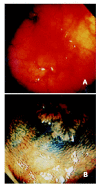
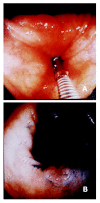
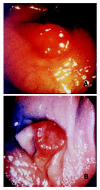
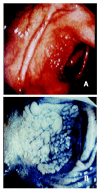
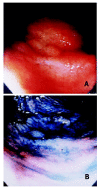
References
-
- Bond JH. Colorectal cancer screening. Curr Opin Oncol. 1998;10:461–466. - PubMed
-
- Breen N, Wagener DK, Brown ML, Davis WW, Ballard-Barbash R. Progress in cancer screening over a decade: results of cancer screening from the 1987, 1992, and 1998 National Health Interview Surveys. J Natl Cancer Inst. 2001;93:1704–1713. - PubMed
-
- Kudo SE, Hara E. [New trends in diagnosis and treatment of depressed and flat type neoplasms in colon and rectum] Nihon Shokakibyo Gakkai Zasshi. 2002;99:463–468. - PubMed
-
- Schroy PC, Heeren T, Bliss CM, Pincus J, Wilson S, Prout M. Implementation of on-site screening sigmoidoscopy positively influences utilization by primary care providers. Gastroenterology. 1999;117:304–311. - PubMed
Publication types
MeSH terms
LinkOut - more resources
Full Text Sources
Medical

